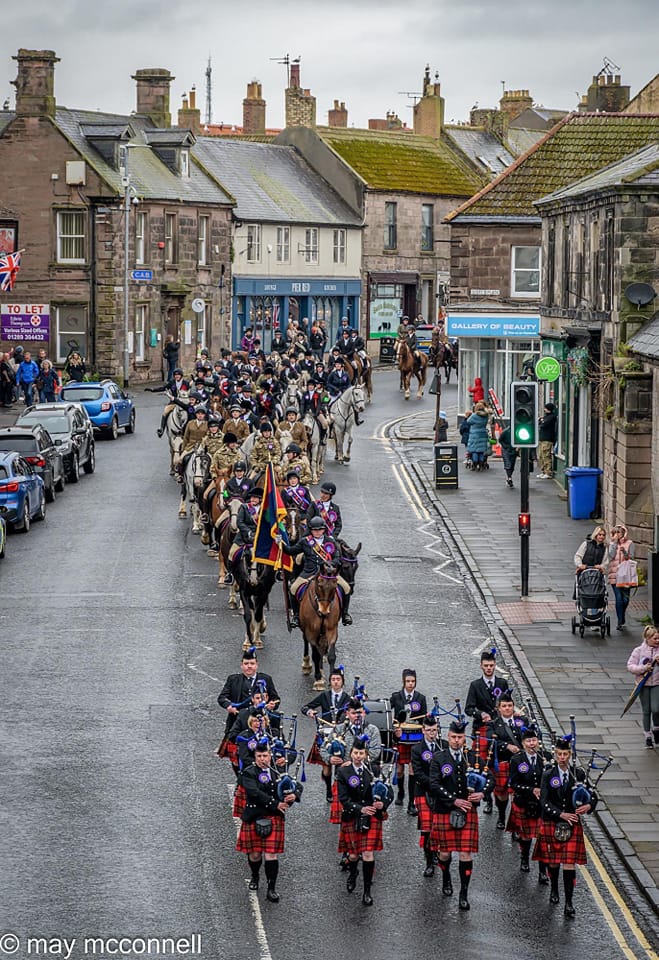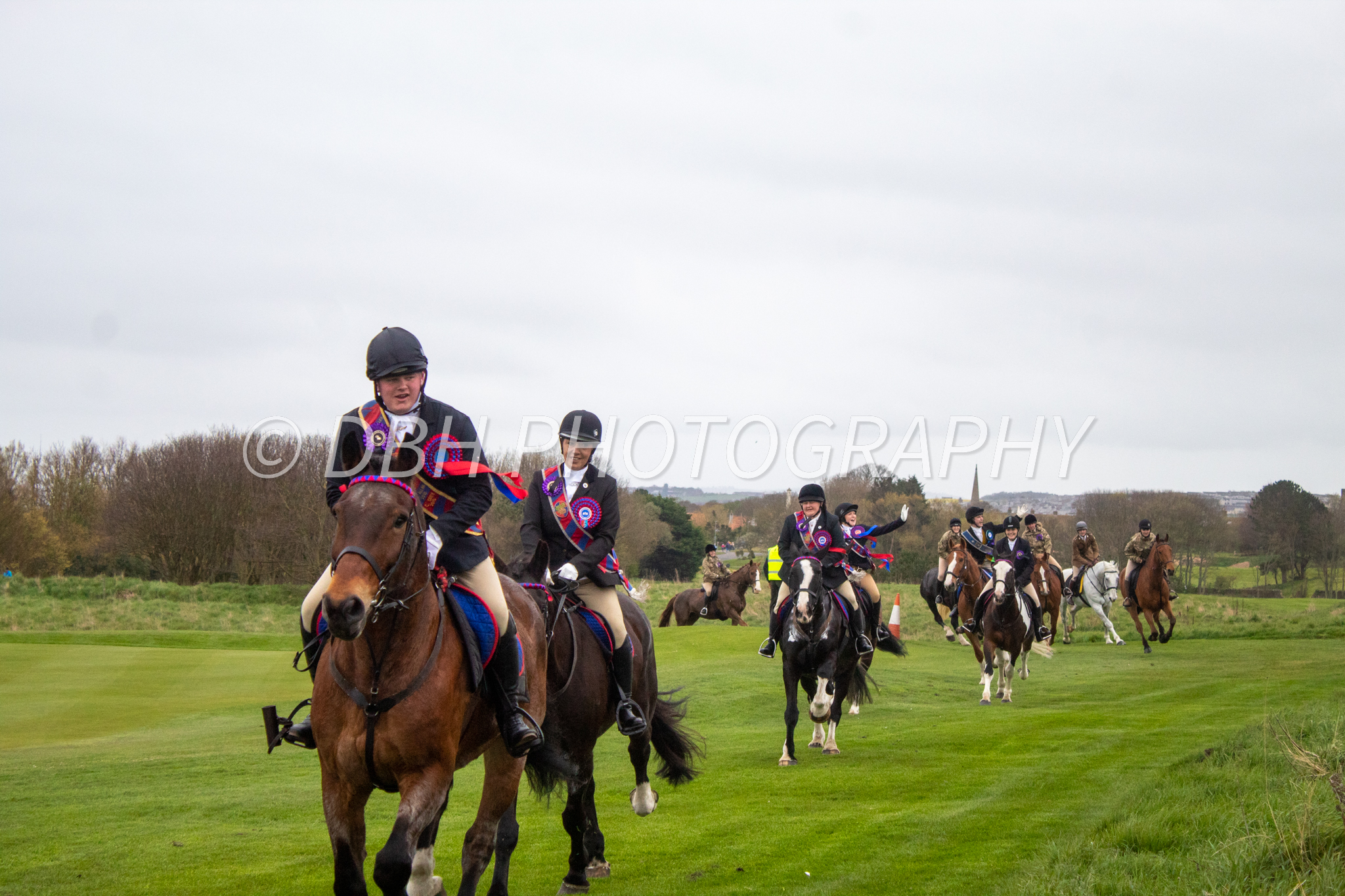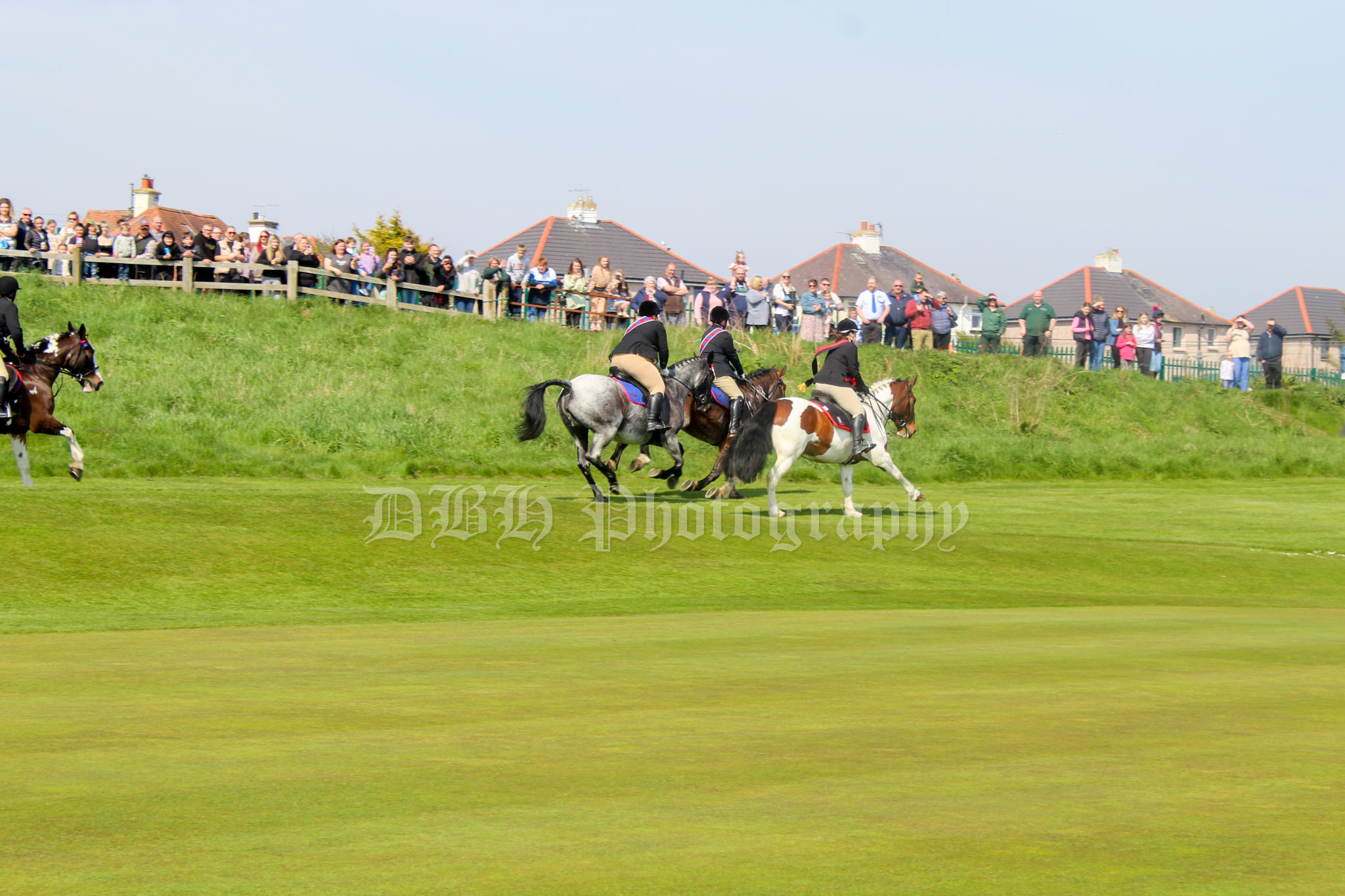History of the Ride
The ‘Bounds’ refers to the Bounds of the Liberties of Berwick-upon-Tweed, the land between the present day Border and the River Tweed. The first description of the Bounds is in a charter created by Robert the Bruce after he took the town in 1318 but this land extended only a little north of where the medieval walls stood (roughly where the Bell Tower was later constructed). Today’s border between England and Scotland was defined in a truce in 1438. However, it was not legally binding and in 1542, it was stated that the Bounds were “to be perambulated so often as to keep them well known.” This would have been carried out by the town’s garrison.
In 1603 the Union of the Crowns saw King James VI of Scotland become James I of England. In 1604, he granted a Royal Charter to the Guild of Freemen in which many of their rights and privileges that still exist today were laid down. Prior to this Charter most of the land within the Bounds was common land, free for all to use – Freemen and non-Freemen alike – for grazing animals and gathering hay (hence Liberties). The Charter granted this land to the Freemen but the practice of common pasturing and haymaking continued. This gave rise to annual land disputes and in 1605 it was decided to divide the land into defined meadows. However, this did not take place until 1608 and the burgesses were ordered to pay 6d (21/2p) for every acre of land they owned to pay for the creation of a boundary ditch between England and Scotland. In 1609, the first civic “Riding of the Bounds” to check the integrity of these land divisions and ditch took place. In the early years the Riding was completed twice annually, in May and October, but more recently it has taken place on 1st May.
Many of the customs still observed today took place in the early days; the decorating of the horses with ribbons, a race at Canty’s Bridge (said to commemorate the crossing of the Border by Margaret Tudor on her way to be married to James IV of Scotland in 1502) and a meal afterwards for the participants. The ceremony has taken place every year with few exceptions such as between 1726 to 1729, when it was cancelled due to lack of funds and the 2001 Foot and Mouth outbreak.
In 2017, due to falling numbers of riders, spectators and volunteers taking part in the ride on the 1st May, it was agreed that if the ride was to survive, a change of date to the nearest Saturday would be required. Although a break in tradition, it was a necessary move to keep the tradition alive. The ride now takes place on the Saturday of May Day Bank Holiday weekend.
The ride was cancelled again in 2020 due to Covid and although restrictions had eased by 2021, large gatherings were still not allowed so a committee only 'Bounds walk, took place instead.
Every year on 1st May the principals head off on foot to "tap the bridge" to honour the May Day tradition.


